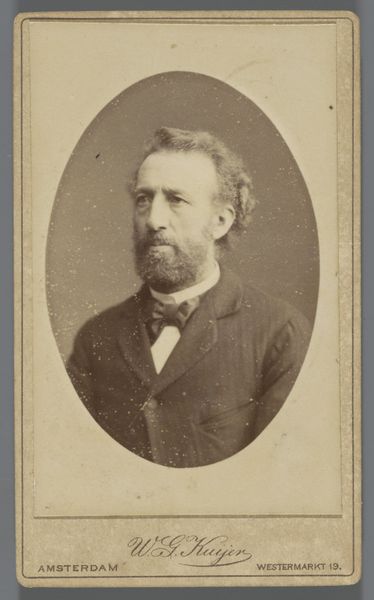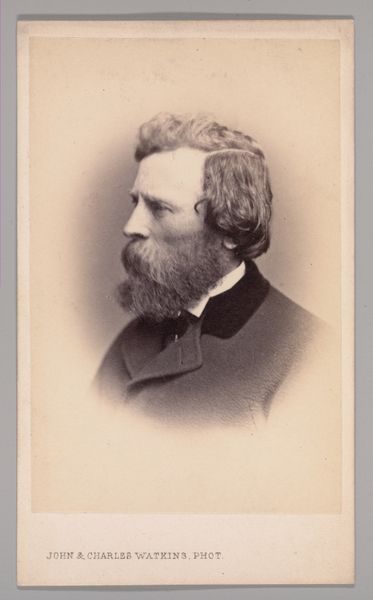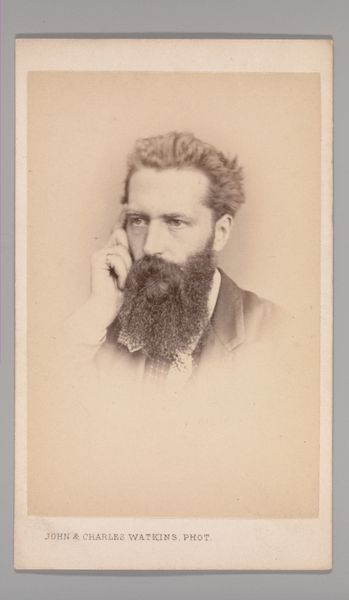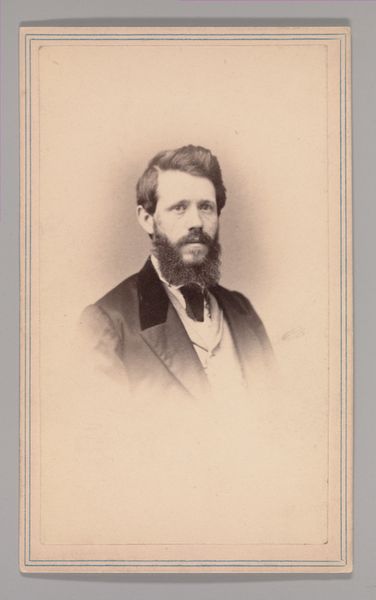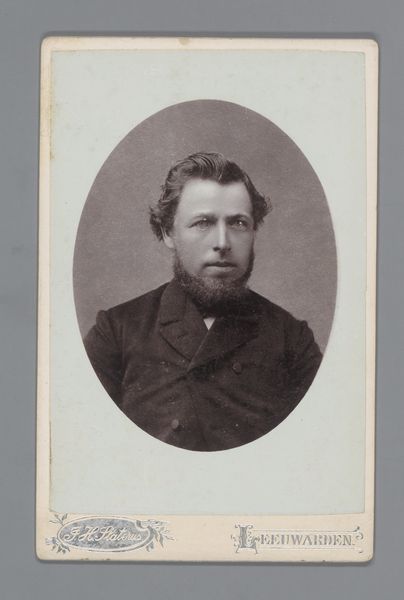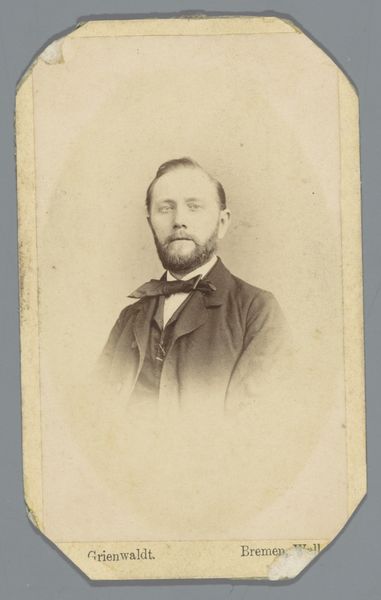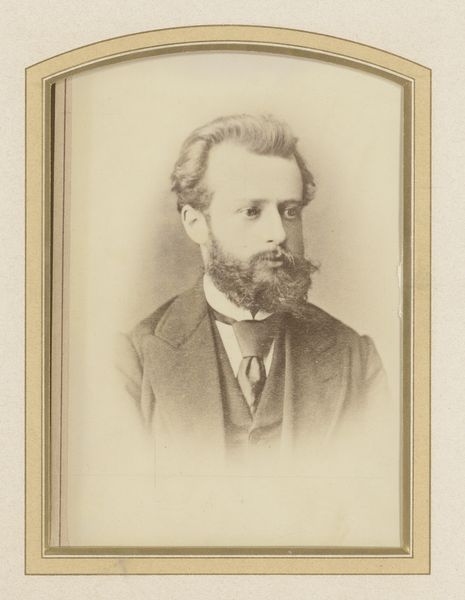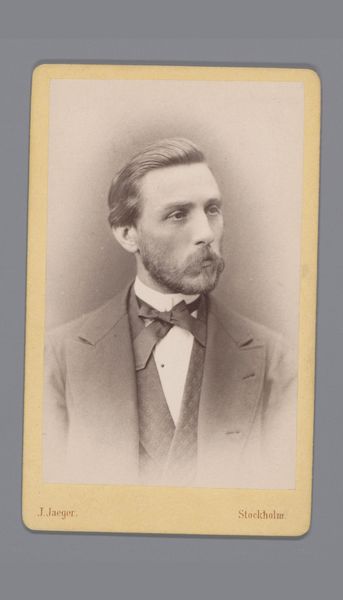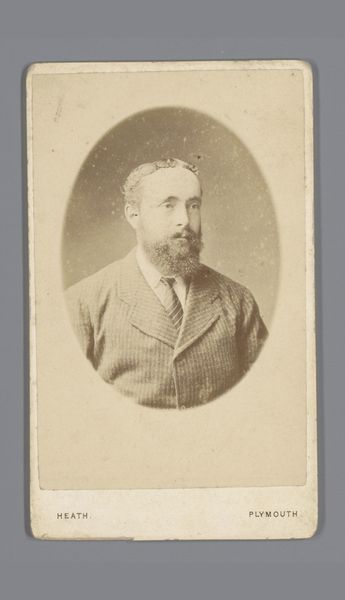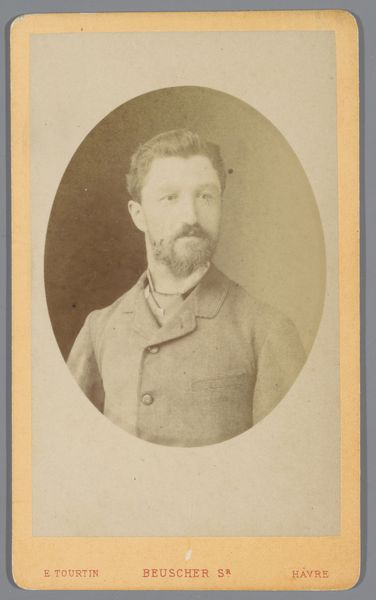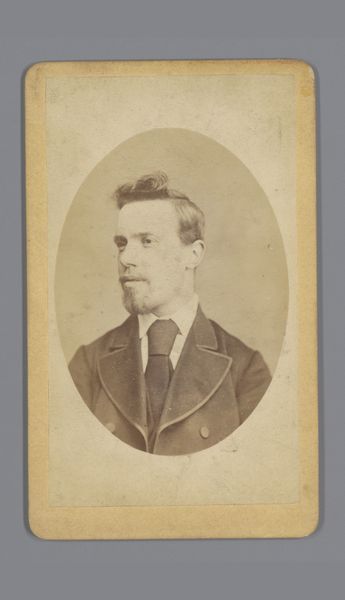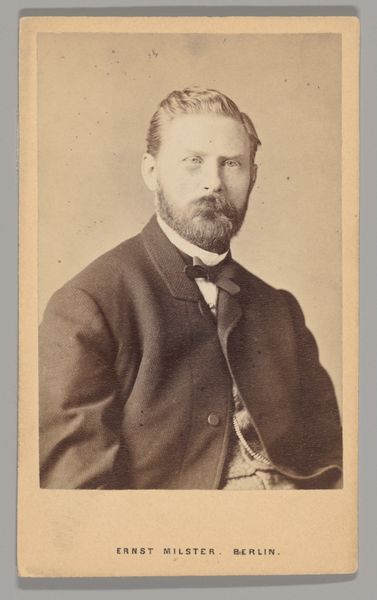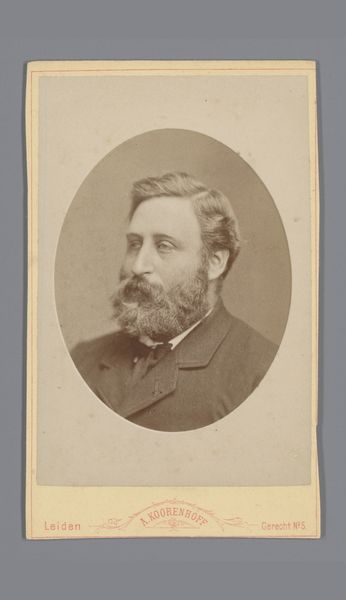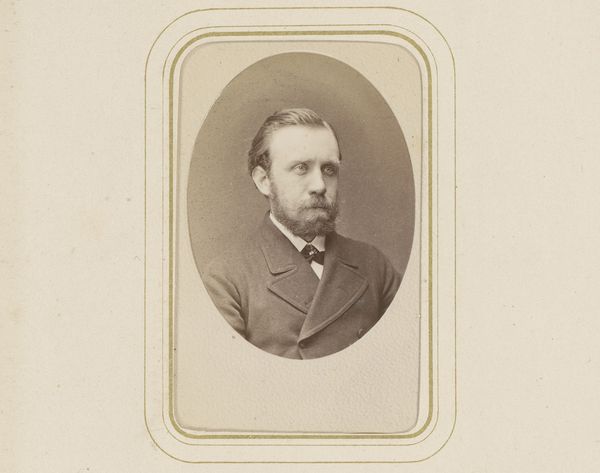
Dimensions: height 104 mm, width 63 mm
Copyright: Rijks Museum: Open Domain
Editor: Here we have "Portret van een onbekende man," or "Portrait of an Unknown Man," a gelatin silver print from around 1880, by Jean Leplat. It's fascinating, almost melancholic, in its simplicity. What do you see in this piece, something that draws you in? Curator: Ah, yes, melancholic indeed! But I also sense a quiet strength, a determined gaze softened by the photographic process itself. Early photography, especially portraits like these, possess such a soulful quality, don’t they? There’s a dance between realism and romanticism happening; he looks at us straight on, yes, but softened by the dreamy oval frame. You almost want to reach out and ask, “What was life like?” I find myself pondering on the very nature of identity. Does the label "unknown man" add a layer of mystique, allowing us to project our own narratives onto his visage? Or is that an imposition? Editor: That's a good question. I was wondering if the “unknown man” is maybe more about his social standing. Did the technology democratize portraiture? Curator: Absolutely, my dear! Suddenly, photography offered a way for ordinary people to have their image captured, an opportunity previously only available to the wealthy elite. Now, did they become "known" through this image? Did they attain any social standing? Perhaps, only in a small circle of beloved ones… Think, each photograph a fragile piece of eternity… Now it makes one ponder who looks at my portraits... And do they care, really? Editor: So, it's more than just a pretty picture. It's a document of social change and our relationship with our own mortality. That makes you see these old portraits in a whole new way. Curator: Exactly! And that's the beauty of art, isn’t it? Always challenging, always making us think and feel anew!
Comments
No comments
Be the first to comment and join the conversation on the ultimate creative platform.
